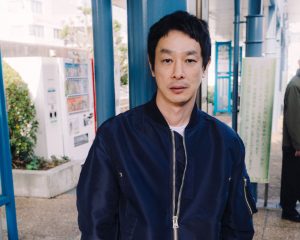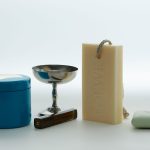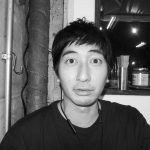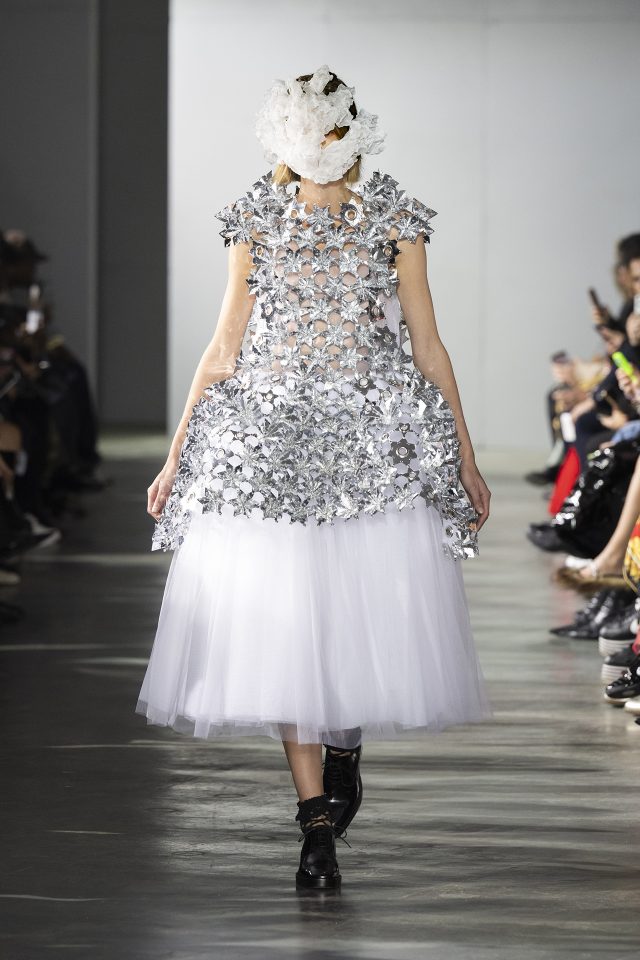TRANSIT GENERAL OFFICE (トランジットジェネラルオフィス) 中村貞裕が語る仕事術
News
TRANSIT GENERAL OFFICE (トランジットジェネラルオフィス) 中村貞裕が語る仕事術
Interview With Sadahiro Nakamura
「ファッション、建築、音楽、デザイン、アート、食をコンテンツに遊び場を創造する」をコンセプトに掲げ、日本だけでなく海外でも高く評価される TRANSIT GENERAL OFFICE (トランジットジェネラルオフィス)。カフェレストラン、ケータリング、ホテル、レジデンス、オフィスのブランディングプロデュースから運営までと多岐にわたる空間を手がけ、昨今でも、オーストラリアの朝食の人気店「bills(ビルズ)」に、世界最大級のレンタルオフィス「the SOHO (ザ・ソーホー)」、複合シェア施設「the SHARE (ザ・シェア)」、発信型シェアオフィス「PORTAL POINT (ポータルポイント)」、「渋谷ヒカリエ」の上層階に構える、銀座「アロマフレスカ」の原田慎次シェフがフードプロデュースを行う「THE THEATRE TABLE (シアターテーブル)」などが話題を呼んだ。こうして常にメディアと顧客を魅了し、確実に満足させる空間を作り出すトレンド仕掛人、TRANSIT GENERAL OFFICE 代表・中村貞裕氏に話を聞いた。
*You’ll find the English text after the Japanese.
「ファッション、建築、音楽、デザイン、アート、食をコンテンツに遊び場を創造する」をコンセプトに掲げ、日本だけでなく海外でも高く評価される TRANSIT GENERAL OFFICE (トランジットジェネラルオフィス)。カフェレストラン、ケータリング、ホテル、レジデンス、オフィスのブランディングプロデュースから運営までと多岐にわたる空間を手がけ、昨今でも、オーストラリアの朝食の人気店「bills(ビルズ)」に、世界最大級のレンタルオフィス「the SOHO (ザ・ソーホー)」、複合シェア施設「the SHARE (ザ・シェア)」、発信型シェアオフィス「PORTAL POINT (ポータルポイント)」、「渋谷ヒカリエ」の上層階に構える、銀座「アロマフレスカ」の原田慎次シェフがフードプロデュースを行う「THE THEATRE TABLE (シアターテーブル)」などが話題を呼んだ。こうして常にメディアと顧客を魅了し、確実に満足させる空間を作り出すトレンド仕掛人、TRANSIT GENERAL OFFICE 代表・中村貞裕氏に話を聞いた。
中村貞裕のルーツ。藤巻幸夫との出会い
—子どものころからファッションや流行に興味があったんですか?
全然ファッションは興味なくて、武蔵小金井で育った普通の子どもでした(笑)ただ親が商売みたいなものをしていて、小さいころから口癖のように「いまはなにが流行ってる?」とか、子どもの年代も含めてマーケティングをされていたんで、物心ついたときには自分でも「なにが流行ってるんだろう」って考えるようになっていました。僕も常に友達に聞いたりしていましたね。
でも、僕はかなりミーハーなんですよ。ずっと自分がミーハーだってことをネガティブにとらえていたんですけど、30歳手前くらいから、やっとポジティブにとらえるようになった。とにかく、すごく好奇心があるんですが、飽き性というか、続かないというか。高校のときもそんな感じでなにも考えてなくて、大学はできるだけいいとこに入りたいな、とくに慶応はモテそうだなって。慶応大学に入ってからはバブルがはじけたときだったんですが、色々好奇心旺盛だったので色々なところへいったりイベントをしたりと学生時代を満喫しました。
—最初に伊勢丹に就職されるわけですが、アパレルに興味はそこまでなかったと?
ミーハーではあったけど、洋服には特に興味はなかったですね。就職が決まってから、洋服にも伊勢丹にも詳しくなったんです。当時、藤巻幸夫さんが、「解放区」という、新人のデザイナーを見つけてきて、買い取って伊勢丹の一番いいフロアで売る、っていう斬新なことをやっていたんです。すごく面白いし、いい仕事だなって、こういうことを僕もやりたいと思いました。だから、2年目に新しくできるファッションフロアに配属されて、藤巻さんと上司と部下の関係になれたときは「やったー!」って。一番花形の部署に配属になれたんで、うれしかったですね。それには、がんばりというか、成果が認められたということもあるんです。
当時、新入社員は新規でアイカードを取得しなきゃいけなくて、普通は5件とかなんだけど、僕は友達が多かったから、180件くらい取ってきたんですよ。伊勢丹はじまって以来と言われました(笑)それは僕が一人でやったんじゃなくて、仲のいい友人たちに頼んだら、その子がまた部下や後輩とかに頼んでくれたんです。
でも、2年目そこそこの僕の描く夢と現実はもちろん違って、忙しいし、藤巻さんは相手してくれないし。で、すぐに辞表を書いたんです。そうしたら藤巻さんから「そう簡単にはクビにならないんだから、辞めるくらいなら、会社をクビになるつもりくらいの気持ちでがんばれ」って言ってくれたんですよ。そう言われても、やりたいことが全然なくて(笑)じゃあ、やりたいことがないんだったら、できることをやろうと思ったんです。なんでもできると思える10代なら別だけど、やりたいことなんかすぐみつからないんだから、できることからはじめればいいなって僕は思うタイプなんで。それがやりたいことにつながるっていうことが、ある程度の年齢になってわかったし。それで、いまできることを考えたら、僕は人を集めてイベントをやることだって思ったんです。
藤巻さんの下にいたこともあって、当時、いろんな若手のクリエイターの人たちに会う機会が多かったんです。でも、名刺交換だけで終わっちゃうのが嫌で、まとめてその人たちが集まる場所をつくれば、一気に交流できるなと思ったんです。それで、「金曜日の夜だけ残業しないでイベントやっていいですか?」って聞いたらお許しが出て、毎週金曜日にパーティーをやらせてもらえることになったんです。それがすごい流行ったんですよ。当時、僕はどんどん雑誌の取材なんかに出ちゃって、宣伝部の人に怒られたりして(笑)でもクビにはならないだろうと思ってやってました。そこで出会った人たちと新しいプロジェクトで一緒に仕事できるようにもなり、それから藤巻さんも会社を辞めていなくなってしまって、僕もさんざんやりたいことをやらせてもらったし、仕事もひとつできたんで、辞表をだしたんです。そのときは誰も止めませんでした(笑)それが30歳のときですね。
トランジットジェネラルオフィス設立のエピソード
—それで起業することになるんですね。
そう。僕30歳手前くらいまでは、すごくミーハーで飽きっぽい自分にコンプレックスがあったんです。でも、あるとき、いろんな友達が僕に聞いてくるようになったんですよ。「中村くん、いまなにが流行ってるの?」とか「いま、女の子とデートするんだったらどこがいい?」とか。そのころは、“歩く東京ウォーカー”って呼ばれてた(笑)そう言われて頼られるようになると、それがプレッシャーになって、新しいお店ができるとどんどん行くし、そもそも新しいもの好きなんで、レストランとかお店とか、話題のスポットはひたすら誰よりも早く行く、もちろん映画だって観に行くようにしていたんです。そんなことをやってるうちに、スペシャリストの人が100×1だとしたら、僕は1を100持ってると気づいたんですよ。そうしたら、100×1も1×100も同じじゃん!って霧が晴れて、ミーハーとして生きる道が開けたんです(笑)
トランジットジェネラルオフィスを起業するってときに、何をやろうかなって考えていて、人を集める場所を作る仕事がいいなと思った。そのとき、ちょうど「バワリーキッチン」っていう新しいカフェが駒沢にできたんです。日本では、NY のダイナーみたいのがそれまで “カフェ”って言われていたんだけど、食事もできて朝までお酒も飲めるっていういままでと違うジャンルが出てきて、僕の持っているお客さんにも合うし、これは僕に向いているなって思った。それで、速攻始めたのが「OFFICE (オフィス)」っていう小さいカフェ。伊勢丹時代のパーティーの人脈が役に立ち、ものすごく人が集まる場所になったんです。その1年後に「Sign (サイン)」外苑前、「OFFICE」の2号店と、とんとん拍子に出店をしたときに、リニューアルすることになったホテル「ニュー目黒」(現在のホテル「CLASKA」)にカフェで出店しないかって話をもらったんです。でも、規模も大きいしお金もなかったんで、企画書だけ出した。それが気に入ってもらえて、企画・運営で僕が入ることになったんです。そしたら、「9部屋しかないからホテルもやらない?」って言われて、僕、基本的に「やれない」って言わないんで、「やります」って言ったんです(笑)
中村貞裕の仕事術
—人の集まる空間の価値をあげていく、プロデュースする上で、決めているプロセスはありますか?
基本的には、誰が見てもわかるネーミングとコンセプトを作ります。コンセプトっていうのは、僕らの中で説明文と呼んでいるもので、長文ではなく10文字とか15文字くらいで端的に表せるもの。僕はどう取材が入るかとか、どう顧客に説明されるかが大切だと思うんです。口コミ効果の出ないものをやる気はなくて、僕らのやったことがどれだけ世の中に広がるかっていうことに生き甲斐を感じているんで、そのためにはメディアで紹介してもらって、口コミが広がることが重要。雑誌に掲載されたときに、本文の前にキャッチコピーがつくじゃないですか。それが僕らの中でのコンセプトになるので、まずそれを作る。
それから、ネーミングとコンセプトをより明確化にわかりやすくするために必要な要素、コンテンツを作っていくんですよ。例えば飲食なら、インテリアデザイナー、ロゴ、メニューとか。普通はそれくらいで終わっちゃうんですけど、僕らはブランディングするためにコンテンツ案を50個はあげるんです。キッズ、イベント、デザート、制服、イケメンスタッフ、BGMとか、極力細かく分けていって50個でも100個でもいい、振り絞って、振り絞って100個出すんです。コンテンツの数が多ければ多いほど話題になる可能性が高い。その後に具体名をキャスティングしていきます。それはインテリアデザイナーでも、家具ブランドでも、キッズだったらキッズチェアーとか。キャスティングっていうと、人の名前って考える人がいるんですけど、世の中に存在してるイベント名だったり、ショップだったりもするし、人も含めてより具体的になるものをキャスティングしていきます。
こうして、全方位型にひっかかるフックを作っていく。いまなら、SNS、雑誌、人、いろんなところに具体名をPRしていける。そうすると、普通は飲食雑誌にしか載らない飲食店のニュースでも、ファッション誌にも子ども用の雑誌にも紹介してもらえる。だからPRポイントを増やして僕らはいろんなジャンルに向けてPRしていく上で、話題になりやすいんです。それに、僕作りっぱなしっていうのがすごく嫌なんですよ。作るだけじゃなくて運営をやるっていうのがすごく大事だから、運営がセットの仕事が好きなんです。飲食とかホテルは、その後に運営がついてくるから。だから、全然知らない人が作ったものの運営を突然はやらないですし、作ったら運営をやらせてほしいって言うんですよ。なぜかって言うと、その後もコンテンツは作り続けないといけない。そのコンテンツを勝手に変に作り替えられるのが嫌なんです。
—作ったものには、全部責任を取っていきたいと?
というのもあるし、僕らはブランディングプロデュースのケアを大事にしていて、ブランド=積み重ねだと思っているんです。僕は大学で広告の勉強をしたわけでも、ブランドの勉強をしたこともないし、広告、ブランドに関してはノー知識なんですけど、伊勢丹で毎日同じものを売ることを6年間繰り返して、日々クレームがあっても対応していく、毎日の一生懸命な積み重ねがブランドになってるんだなって、勉強したんです。会社を辞めたあとは、小さなカフェで安い珈琲を毎日売って、先輩に会うと、「いま喫茶店やってるのか、がんばれよー」って言われたりして。でも毎日続けてたら、大手企業から話をもらえるようなブランドになってきた。積み重ね、継続、その後が大切っていう思いがあるから、オペレーションはすごく重要なんです。
空間プロデュースっていうと、作ったらそこで終わりみたいだけど、僕らは空間ブランディングプロデュースと名付けていて、空間をブランド化するためのプロデュースですよと説明しています。実際にブランドを作っていくのはその後の話なので、その土台をうちが作って、オペレーションしながら最終的なブランディングをしていくという第二フェーズもやりたいという。やれない場合は、ビジネスチャンスも増えるんでアドバイザーとして入ることが多いです。プロデュースっていう大きな柱と座布団形式のオペレーションという柱の二つの構造で売上が増えてくんで、面白いですよねって評価高いんです。ほかにあまりやっているところが少ないので。
ブランドカフェのプロデュースの極意
—GUCCI や DIESEL、メルセデス・ベンツなどブランドのカフェも手がけてらっしゃいますよね。
カフェを作ってすぐくらいのときに、アパレルのお客さんが多くて、ケータリングをよくやってたんです。当時はまだケータリングっていう発想がなくて、クライアントのために出張で赤字覚悟でカフェやりますという感じでやっていたんですけど、トランジットらしい特徴を出したころからラッキーなことに徐々に仕事をいただけてそれが定着してきたんです。伊勢丹で働いているときに、日本のパーティーって、海外に比べてスタッフがちょっとダサいなって思っていたので、ウエイターとしてイケメンをそろえようっていうことになって、200人くらいかっこいい男の子に登録してもらったんです。女の子は、かわいい子が働けるところがたくさんあるんですけど、男のイケメンってあまり働くところがないんですよ。コンビニやカフェで働いたりしてるんだけど、モデル事務所のオーディションがあって怒られて辞めてたりしてて、うちは自由だし、自分の働けるパーティーのときだけ働いてくれればいいし、次第に登録数が増えていまは300人くらいいますね。
それで、トランジットに頼めば、イケメンケータリングが来ると人気がでて、気づいたらファッションブランドのケータリングで1、2番の会社になれたんです。今はイベントとケータリングは「TRANSIT Crew」という別会社にしています。それで、GUCCI のカフェができるときにはケータリングでお世話になっていたのももちろん、伊勢丹出身の先輩方も多いので、「銀座に建てるビルのワンフロアをカフェにするんだけどプレゼンしてみないか?」と声かけてもらって、本国にプレゼンして、企画・運営で入ることになったんです。当時ブランドカフェが全くなかったんで GUCCI CAFE は非常に話題になりました。それ以来様々なブランドさんにお声かけいただいていますし、もちろんプレゼンにも参加しています。
—ブランドのカフェもそうですが、いま手がけているもの、今後手がけたいものはありますか?
ブランドのカフェは、ありがたいことに色々なブランドさんと一緒にやらせていただいていて、それが柱にはなってきています。あとは、直営店や、空間、ホテル、商業施設のブランディングプロデュース、今だと地方再生の仕事もあります。旅館も兼ねた地域活性、地域全体の町づくりなどです。あとは『bills』が、4店舗目までできました。海外のブランドレストランを日本へ持ってきて成功した例ってなかなかないんです。『bills』のおかげでいろいろなブランドさんがヒアリングに来てくれるので、海外ものもこれから増えてくかな。
最近は“シェア”というキーワードを中心にシェアオフィスとか、シェア施設とかシェアできるものをキーワードで作っていましたね。(株)リビタプロデュースの原宿の複合シェア施設「THE SHARE」でクリエイティブディレクションをやらせてもらったり、自社でもトランジットの本社に併設したシェアオフィス「PORTAL POINT を作りました。TRANSITは、カフェのイメージが強かったんですけど、ライフスタイルに影響することに注目しながら“遊び場”を創っているんで、最近はあまりカフェだけを打ち出さないようにしています。最近僕の中で流行りそうだなと思っているのが、ミシュランシェフと組んでそれをカジュアルダウンさせた店。ミシュランシェフのお店に行きたいけれど、やはり景気がいいわけではないので、今のニーズには合っていると思うんです。そこでまずはじめたのが渋谷ヒカリエの『THE THEATRE TABLE』です。
昔は、海外のものを日本に持ってくるのが嫌だったし、オリジナルにこだわっていたんですが、『bills』をやったら、オリジナルもいいけれど、あるものを勉強してローンチするっていう楽しさを知りました。いま、グローバルスタンダードというテーマが僕の中にあって、『bills』は世界レベルのショップだし、そのままNYに持って行っても恥ずかしくない。いままでの僕のオリジナルレベルだと、海外に持って行くにはちょっと足りない。だからグローバルスタンダードとして成功しているものと組みたいとか、そうなり得るオリジナルを作ろう、このまま世界に持って行っても恥ずかしくないものをやろうっていう意識が出てきましたね。
正直、僕はいけると思ったらすぐにやっちゃうんです。今度、8月に逗子で日曜しかやっていないパンケーキショップ『SUNDAY JAM』と組んで原宿のパンケーキ戦争の中に『「SUNDAY JAM」harajuku』を出します。元々平日と土曜日は天然酵母を使ったパン屋さんで粉もののスペシャリストだけに信じられないくらい美味しい!絶対に流行ると思います。やりたいけどやれていないことは、本物のホテルをやりたいんですよ。3年から5年以内には、必ずやろうと思っていて、海外のものを持ってくる可能性もあるし、オリジナルを作る可能性もありますね。東京のど真ん中に、遊び場として、絶対にいままでみたことのないホテルを作ろうと思って動いてます。
—ご自身は、コンセプトを決めてキャスティングをしてプロデュースするという一貫したスタンスなんですね。
企画をしてキャスティングをすることはつまり目利きになればいいんです。ミーハーだからこそいろんなことが広く知っているというか、街で歩いてたり、パーティーでも、そこにいる人をまったく知らなかったらフックにかからないんで、いろんな意味での自分の中のフックにひっかかるようにはしてるんです。だから、人よりは色んな気づきがあるかもしれない。気付いたらそれを後で勉強して調べるなり、スペシャリストに聞けばいい。
全く知識やトゲがないと引っ掛かりもしないから、薄っぺらい知識を限りなく多く持ってるっていうことが大事なんです。僕はよく立ち読みするんですけど、ありとあらゆるジャンルの雑誌を立ち読みします。、でも、読み込まないからパラパラ読むだけ。そうすることでいま流行ってることが見えてきます。多大な情報の中の最大公約数の中から誰よりも早く的確にトレンドを見つけて。スピードよく大きくやるのが僕らの仕事。1を見つけるだけなんです。ゼロから1をやってるつもりはなくて、誰も気づいていない1を見つけて、10にする。ひたすら10になりそうな1を見つけるようにしています。
キャスティングを重要視している僕の仕事のやり方だと、自分ひとりではできないので、スペシャリストを巻き込みますね。様々なスペシャリストの方とはすぐ仕事をお願いできるような関係を築いています。色々な方をキャスティングするためには、知り合いがすごく多いのはもちろん大切ですが、誰かとべったりというわけではなく、ほどよい距離感をもちながらいつでもお声かけできるようにしています。
—そんな中村さんが、昔から続けていることっていうのはあるんですか?
やっぱり新しいものを見ることですね。ウインドウショッピング的に見る。とくにグルメじゃなくてもおいしい飲食店を多く知ってるっていうことが、情報通としては一番わかりやすくアピールできることろなんで、そこは徹底してます。この調査は学生時代から20年間、ずっと続けてる。おいしいところを知ってる人って一目おかれるんですよね。新しいお店、話題なものについて詳しくなろうとしない人は、うちの会社には向いてないかもしれない。ミーハー的な素質がない人は、僕の求めるプロデューサーとしては向いてないかもしれないですね。
—今後、若者をターゲットにした空間プロデュースもお考えですか?
年齢のみの切り口はあんまり考えていないですね。基本はテイストマーケットを考えています。昔の百貨店は年齢別の切り口をしていましたが。バーニーズができた当時、年齢ではなくこのテイストが好きな人という切り口がすごく勉強になりました。なので、僕にとっては、こういう雰囲気が好きっていう人たちがターゲットですね。僕自身は僕の年齢の前後10歳くらいの感じは肌でわかりますが、20代がターゲットのものは、30代の人にやらせる。60代とかは、50歳の先輩に聞いてアイデアをもらう。もちろんマーケティングはするので、なにか流行ってるかはわかるけど、自分自身のモチベーションがそこまであがらないので、その世代の人に振ってしまいますしね。
僕は、別に新しいことをやろうとも思っていないし、他人に真似されても全然いいんです。同じ人がやらなければ絶対同じものにならないと思うんですよ。企画書を渡してもディレクションする人によって全然違うものになるから。ちょっと語弊があるけど、いまの僕は自分が興味があること、やりたいことをやっているだけなんですよ。そのためには、なんのジャンルでもスペシャリストをどれだけ抱えられるかっていうのが大事なんです。僕のやり方は常にWIN-WINなんです(笑)
—中村さんが、いまおすすめの大人の遊び場
・渋谷ヒカリエのTHE THEATER TABLE
自分の店なんですけど、大人になった人たちが満足できる内容にしました。広く抜けた店内は懐かしさがあり、夜の照明にもこだわっています。テラス席にでると、アジアの中の東京を感じられる場所。ミシュランシェフの原田慎次シェフのフードは“ネオトラットリア”をテーマにしっかり美味しい食事が楽しめます。
・代官山蔦屋書店
週3は帰る前に寄ってます。情報収集できるし、友達とも交流できる。あそこは完全に大人をターゲットにしていて、上のラウンジは夜は落ち着いた雰囲気で席もゆったりしているし、僕にとっては一日いられる、ディズニーランド状態なんです。
・恵比寿横町
はしご飯っていうのが好きで、腹6分目にして色んな店に行きたいんですよね。ひとつの店で満腹するのが嫌で。だいたいグルメな先輩に連れてってもらって、焼き鳥屋さんに行った後で〆は別のお店に担々麺食べにいったりとか。ハシゴするんです。恵比寿横町ではプチはしご飯ができる。最終地点のワケアリっていう10人くらいしか入れないスナックがあって、そこで気が狂ったようにカラオケするのが好きですね。
<プロフィール>
中村貞裕(なかむら さだひろ)/トランジットジェネラルオフィス代表取締役社長。1971年東京都生まれ。慶應義塾大学卒業後、伊勢丹を経て、2001年に「ファッション、 建築、音楽、デザイン、アート、飲食をコンテンツに遊び場を創造する」を企業コンセプトに、トランジットジェネラルオフィスを設立。カフェブームの立役者 としてカフェ「Sign」をはじめ、「GUCCI CAFE」や「bills」など、カフェやレストランの運営を約40店舗手掛けるほか、ホテル「CLASKA」、大阪の「堂島ホテル」、「the SOHO」などの話題の施設、さらにはオフィス、商業施設、ファッションブランドのブランディングやプロデュースなど、その仕事は多岐に渡り、今後は海外 進出も控えている。近年グループ会社として、イベント&ケータリング会社「TRANSIT CREW」、不動産総合プロデュース会社「REAL GATE」、ITソリューション会社「JET AGENCY」、人材紹介会社の「Departure & Partners」を設立。トランジットのユニークでエッジの効いたテイストやセンス、サービスは、日本はもとより海外においても高く評価されており、空 間創造総合企業を目指し、話題の遊び場を創造すべく日々精力的に活動中。
Attracting praise from critics both domestically and internationally, TRANSIT GENERAL OFFICE works to develop recreational facilities around the concept of uniting fashion, architecture, music, design, art, and gourmet into one establishment. Their work entails branding and management for numerous popular cafés, restaurants, catering services, hotels, residences, offices and more. Recent projects include the popular Australian breakfast café bills, luxury rental offices and share spaces such as the SOHO and the SHARE, and THE THEATRE TABLE – a restaurant dominating the top floor of the new Shibuya Hikarie building and produced by Ginza Aromafresca’s Chef Shinji Harada. The man behind these public and media sensations is TRANSIT GENERAL OFFICE’s CEO, Sadahiro Nakamura.
—Were you interested in fashion and trends since childhood?
I wasn’t interested in fashion at all, and I was just a normal kid who grew up in Musashi Koganei (a suburb of Tokyo). However, my parents were running a business and had a habit of asking questions like “what’s popular lately?” since I was little. They also had me help with marketing as a child, so before I knew it, I began thinking to myself “I wonder what’s popular right now” on my own. I was even asking my friends about it.
But I’m a total trendwhore. I always felt negative about that fact, but just prior to the age of thirty, I finally learned to take it positively. Anyways, I am really curious, but you might say that I get bored of things easily or don’t continue them for a long time. In high school, I was just following the trends and not really thinking about anything except that I wanted to get into a good university like Keio, which I thought would make me more attractive. Although I got into Keio University right around the time when the economic bubble popped, I was full of curiosity and went to many different places and events, enjoying my college life to the fullest.
—So, even though you weren’t interested in apparel, your first job was at the Isetan department store?
I was a trendwhore, but I wasn’t really interested in clothes. I didn’t really know much about clothes or Isetan until after I got the job. Around that time, Yukio Fujimaki started up a cutting-edge project he called “the liberated zone”, in which he would find new designers and sell their products on the top floor of Isetan. I thought it was an interesting idea and great work, so I decided that I wanted to do it, too. When I got transferred to work under Mr. Fujimaki on that new fashion floor, which opened during my second year at the company, I was ecstatic. I became part of the most popular division, so I was really happy. On top of that, I felt like my hard work or my performance was being recognized.
At that time, new workers were required to get I Card (Isetan credit card) contracts, and while regular workers were only getting around 5 or so contracts, I had a lot of friends and brought in around 180 new contracts. I was told that it was the most since the store opened. It wasn’t something I did by myself; I just asked my good friends, and they asked their superiors and subordinates for me, too.
However, my dream as a second-year staff and reality was a bit different, and Mr. Fujimaki was extremely busy and didn’t really pay particular attention to me. So I immediately wrote a letter of resignation from the company. Then, Mr. Fujimaki said to me “You won’t get fired here that easily, but if you are comfortable quitting this easily anyways, you should try working so hard that the company wants to fire you first.”
Despite being told such, I didn’t have anything I really wanted to do. I thought that if there was nothing that I wanted to do, then I should start from what I could do. Aside from my teenage years when I thoughtI could do anything, I have a hard time finding what I want to do quickly, so I’m the type that thinks I should start from what I can do. And I realized when I was much older that this would connect to what I really wanted to do in the end. So, when I thought about what I could do at that time, it was gathering people and putting on an event.
In my position below Mr. Fujita, I had the opportunity to meet a variety of young creative minds. However, I was dissatisfied that our interaction would basically end with an exchange of business cards, so I thought that if I made a place where I could bring all of those people together, I could get to know all of them at once. So I asked “Can I just not do overtime on Fridays and instead hold an event?” And somehow, I got permission to have a party every Friday night. It became really popular. I started to get appearances in magazines more and more, and the people from the PR department even got mad at me. But I kept doing it with the mindset that I wouldn’t get fired anyways.
I got a hand in a variety of projects through the people I met there, and by that time, Mr. Fujimaki had already left the company, and I had enjoyed plenty of chances to do what I wanted to and had achieved enough out of it that I wrote a letter of resignation. Nobody stopped me this time around! That was when I was thirty years old.
—And then you decided to start your own company.
That’s right. Until right before the age of 30, I was self-conscious of my fickle and easily bored self. But suddenly, a lot of friends began asking me about things. Stuff like “Hey, Nakamura, what’s in style these days?” or “Where do you think would be a good date spot to take a girl?” At that time, friends were referring me to as the “walking Tokyo Walker” (after the name of a magazine that offers information about popular recreation spots in Tokyo). Being depended on in that way turned in to pressure, so I began going to more and more new shops. I like new things in the first place, so whenever some new spot opened up like stores or restaurants, I would be the first to go, and I was even following the latest movies. A specialist is someone who knows 100 about 1 subject, but I knew 1 about 100 subjects. Then it dawned on me that 100 x 1 and 1 x 100 is the exact same thing, and I discovered the way of life as a trendwhore!
When I started TRANSIT GENERAL OFFICE, I was thinking about what I should do and decided that I should make a place where people gather. Conveniently, a new café named BOWERY KITCHEN opened up at that time in Komazawa. In Japan, New York-style diners were referred to as cafés up until then, but this establishment introduced a new genre that offered meals and would be open for drinks until morning. I thought that it matched my customers as well as my own tastes. So I immediately opened my own little café called OFFICE. The connections I made while running parties at Isetan proved helpful in making it a place that an amazing amount of people came to gather. One year later, I made a second branch in Gaiemmae called Sign, and just when I began to lose interest, the under-renovation hotel called The New Meguro (now known as CLASKA), asked if I would like to make a restaurant in the hotel.
It required a big investment, and I didn’t have much money, but I submitted a plan anyways. They liked it so much that they brought me on in a Planning and Management position. Then they said, “There are only nine rooms, so do you want to just run the whole hotel?” I basically never say that I can’t do something,so I told them “I’ll do it”.
—When producing a new space, do you have a method that you follow for increasing the value customers get out of their visit?
As a fundamental, I develop a name and a concept that anyone can easily understand. The concept is like a manual inside our minds that is only a few words long. I think that it’s important to consider what kind of media coverage we will get and how we will explain the establishment to our customers. I’m not interested in projects that don’t generate a word-of-mouth effect – I feel motivated by the thought of how much the products of my work can spread throughout society, and for that reason, arranging media coverage to get people talking about it is extremely important. At the top of any magazine article, there is a headline, right? The concept communicated by the headline tends to stick with us, so I always make that first.
The next necessary step is to make the naming and concept clear and easy to understand by generating components and contents. For example, if it’s a restaurant, then it might be the interior design, the logo, or the menu. Normally, it would just end there, but our method of branding would include 50 different factors. We separate one restaurant into areas like kids, events, desserts, uniforms, handsome staff, background music, and other fine details until there are 50 or even 100 components. We strain and strain until we can muster one hundred. The more contents there are, the more chance there is of one of those contents becoming a popular conversation topic.
After that, we go about casting them with concrete names. It might be an interior designer or a brand of furniture. If the content category is kids, then it might mean thinking about kids’ chairs. When we say “casting”, some tend to think we mean people, but our definition could include event names, shops, people, or anything relatively tangible.
In this way, we make hooks to latch onto from every direction. Nowadays, you can do promote these fine details through SNS, magazines, people and a multitude of other venues. By doing so, a restaurant that would usually only get covered by a dining magazine might be introduced in fashion and children’s magazines as well. Thus, we maximize the number of appeal points at our disposal in order to reach the greatest variety of press genres and, more importantly, to make it easier to generate buzz.
Also, I don’t like the idea of creating it and then just leaving it out in the open. Not just creating it but also managing it holds great significance, so I like work that brings the two as a set. Behind a restaurant and a hotel comes the management. I would never just suddenly take up managing a project somebody else has created, and I always ask if I can also manage what I have created. If you ask why, it’s because even after something is created, you still have to continue to generate new contents. I would feel upset if someone arbitrarily remade those contents in a weird way.
—You mean you want to be responsible for everything you make?
That’s part of it, but also, we emphasize the after care of the branding that we produce, since to us a brand equals a building up of many smaller parts. It’s not like I studied publicity or branding while I was in university, and I’m completely ignorant as far as brands go, but I repeated selling the same products at Isetan for 6 years, and I would even deal with complaints from customers on a daily basis. This taught me that the hard work from each day builds up to make it the brand that it is. After I quit, I opened up a small café and sold cheap coffee everyday, and the people around me told me to work hard. I did so everyday, and now it has become a brand that draws offers from major companies. I think that building up, continuing and what follows are really important. That’s why I feel operation is so significant.
If you call it “space production”, then it just ends with that, but we use the name “branding production” because we produce a space that can perform as branding. Since actually making the brand comes later, we first provide the foundation and then, while operating on this base, we ultimately enter into a second phase that is branding. Even when we can’t do this, we often enter as an advisory role to increase our business chances. Using one big pillar, brand production, and a cushion-type pillar, operation, together to form the structure of increasing sales is an interesting idea, I am often told positively. Because not many other people are doing it.
—You are involved in the development of brand cafés for labels such as Gucci, Diesel, and Mercedes-Benz, right?
Right after opening my café, I had many customers in the apparel industry and often catered for them. I hadn’t really planned to cater, but I was prepared to go as far as putting myself in debt if it meant pleasing my clients. Luckily, I had really begun to develop the TRANSIT style, and I gradually gained a regular customer base. When I was working at Isetan, I felt that wait staff at Japanese parties were really unattractive when compared to events in other countries, so I decided to collect handsome waiters and had about two hundred good-looking young men sign up. You can find cute girls working at a lot of different places, but there aren’t many places to find good-looking guys. They might work at regular places like convenience stores and cafés, but they could get in trouble and decide to quit when work conflicts with an audition for a modeling agency. They’re free to do what they want if they work for us, and they only have to work at parties that fit their schedule.
Then, word of our handsome catering staff got around, and before I knew it we had become the #1 or #2 catering service for fashion brands. Now, I have made a separate company for events and catering called TRANSIT Crew. So then, customers I had been catering for as well as my former coworkers from Isetan who had moved to Gucci said “One floor of the new Ginza Gucci Building will be made into a café, so why don’t you present an idea for it?” I presented my idea to the headquarters in Italy, and they hired me for planning and management. At the time, there weren’t any brand cafés, so the Gucci Café became huge news. Since then, numerous brands have approached me, and I have happily presented my ideas.
—Are there any projects that you are currently working on or want to get in on in the future?
The projects I have gotten from brand cafés have become a pillar of my work. Aside from that, I have been working on producing the branding for retail shops, spaces, hotels, and commercial facilities, and currently I am even working on regional recovery projects. This ranges from regional revitalization including dealing with ryokan (Japanese traditional lodging) to actual city planning. And the café bills has now opened its fourth location. There are not many examples of foreign restaurants that came to Japan and were successful. Thanks to the popularity of bills, I have been getting a lot of inquiries from different brands, so I’m expecting to get more from overseas from now on, as well.
Recently, I have been developing a variety of facilities around the keyword “share”. I was in charge of the creative direction for the Harajuku cooperative use facility called THE SHARE. Furthermore, I established a share office called PORTAL POINT in the same building we have our headquarters. TRANSIT is heavily associated with cafés, but we emphasize the positive effects made on customers’ lifestyles when creating a new space, so I am trying to avoid only having cafés in the forefront. Recently, an idea that I think will be successful is to partner up with a Michelin Chef and make a casual restaurant. People want to eat at restaurants with Michelin Chefs, but the economy isn’t good after all, and I don’t think it really suits the era’s needs. I’ve started by opening up THE THEATRE TABLE in Shibuya’s Hikarie building.
In the past, I wasn’t really in favor of just bringing over foreign brands to Japan, because I wanted to develop everything from scratch. But after working on bills, I realized that original projects are great, but there’s also a lot of fun in studying an existing brand and launching it. Right now, I have a theme inside my head of a “global standard”, and bills is a world-class establishment that I would feel comfortable bringing over to New York exactly how it is now. I feel that the level of my original projects hasn’t been quite up to par yet to expand internationally. That’s why I wanted to partner myself with a brand succeeding as a global standard. It inspires me to develop an original brand that I can proudly to take overseas.
Honestly, if I think an idea will succeed, I will act on it immediately. Next, I’m going to pair up with a pancake shop from Zushi that only opens on Sundays called SUNDAY JAM and release a new SUNDAY JAM harajuku amidst the Harajuku pancake war. The shop, run by a flour specialist, was originally an unbelievably delicious natural yeast bakery open on weekdays and Saturdays. I am sure it will be popular. Developing a real hotel is something that I want to but haven’t yet had the opportunity to do. Within 3-5 years, I am definitely planning to go for it. I might bring something from overseas, or I might create something original. I work to develop a type of recreational spot that has never been seen before.
—So you take a consistent stance about producing a concept based on a “casting” system of categorization?
By planning and then casting, you develop an expert sense. Because I follow trends, I possess knowledge about a wide range of topics. To put my reasoning simply, when walking through the city or even at a party, without knowing anything about the people around me, I can’t remember them. But I am trying to create hooks to latch them onto in my head by familiarizing myself with a variety of subjects.
With absolutely no knowledge on a subject, I can’t make that link, so I value having slight understandings of numerous topics. I flip through magazines of every genre when I go to bookstores. But I don’t read them thoroughly – I just skim. By doing that, I can get a sense of what is popular right now. Our job entails finding the common divisor for a great deal of information earlier and more accurately than others. It’s all about doing it fast and on a large scale. It’s about finding that “1”. This doesn’t mean we’re making 1 out of 0; we are searching for a 1 that nobody else has noticed and then making it into 10. Perhaps we seek that 1 that seems like it will become a 10 in the future.
I cannot achieve my method by myself, as it places great importance on casting, so I always involve specialists. I keep all types of specialists on hand, so I can ask them to get on the project immediately if the need arises. Doing this of course requires knowing a lot of people, but it’s not like you have to be really close. I keep our relationship just close enough that I can call upon them when their help is needed for a project.
—You follow trends very closely and seem to be very dynamic, but do you have any long-time practices?
That would be my practice of finding new stuff. I look at everything like I’m window-shopping. Knowing where to get good food appeals to others easily. This doesn’t just mean gourmet dining but delicious restaurants in general. I’ve been consistent about this for the 20 years since I was a student. People who know where to get good food gain respect. People who don’t try to verse themselves about new shops or buzz topics probably wouldn’t suit our company. People who don’t have some “trendwhore” qualities to them probably don’t suit the brand production concept that I am going for.
—Do you plan to produce any spaces targeting young people in the future?
I am not really trying to limit anything by age. I usually segment the market by taste. Department stores used to separate their targets by age, but when Barney’s came out, I learned quite a bit about division by taste instead of generation. Therefore, as far as I’m concerned, I target people who enjoy the atmosphere. I can inherently pick up on the interests of people within 10 years of my age, but I would rather have someone in his or her 30s manage a project that targets people in their 20s. When aiming at people in their 60s, I would turn to the advice of colleagues in their 50s. Of course, I do the marketing and know the trends, but I am not as motivated personally, so I tend to pass that work to people closer to that generation.
I’m not really trying to do anything new, and I’m totally fine with copying others. If a different person is doing it, it will undoubtedly produce a different final product. Even if you have a plan, the way it is put into action can be completely different depending on the person in charge of direction. I’m guilty of only doing what I am interested in at the moment. As a result, it’s really important to me to have specialists around me of every genre. It’s usually a win-win situation!
—Mr. Nakamura’s current recommended recreation spots for adults:
THE THEATRE TABLE at Shibuya Hikarie
It’s my own store, but I have filled it with contents that appeal to adults. The spacious interior has a reminiscent bit to it, and I was selective about the lighting at night. You feel like you are in Tokyo when you’re out on the terrace. It offers “neo trattoria” themed food prepared by the Michelin Chef Shinji Harada that you can really enjoy.
Tsutaya Daikanyama
I stop there three times a week before heading home. I can absorb a lot of information there, I can interact with my friends there. It’s completely aimed at adults, and the lounge on top has comfortable seats and a relaxed atmosphere. I can spend the whole day there; it’s like Disneyland to me.
Ebisu Yokocho
I love meal hopping, so I usually want to eat until I’m 60% full and then go to another place. I hate getting full at one place. Anyways, when someone who loves gourmet takes me to dinner, going to eat yakitori and then heading somewhere else to have Dandan noodles is totally normal. At Ebisu Yokocho, you can do miniature restaurant hopping. At the end, there’s a pub that only fits about 10 people. I like to go there and sing karaoke like crazy.
<Profile>
Sadahiro Nakamura / TRANSIT GENERAL OFFICE President. Born in Tokyo in 1971. After graduating from Keio University, he spent time working with Isetan until he established a company called TRANSITGENERAL OFFICE in 2001 which was built around the concept of uniting fashion, architecture, music, design, art, and gourmet into one facility. Playing a key role in the Japanese café boom, he started up the café Sign and was involved with over 40 other restaurants and cafés including bills and GUCCI CAFÉ, among other big names. Furthermore, his operations include Tokyo hotel CLASKA, Osaka’s Dojima Hotel, luxury rental office the SOHO, and other office and commercial facilities, and even the branding production for several fashion labels. Having gained a variety of experience, he plans to expand overseas in the near future. Recently, as group companies, he has established an event and catering business called TRANSIT CREW, a real estate production company named REAL GATE, an IT solutions firm known as JET AGENCY, and a staffing agency entitled Departure & Partners. TRANSIT’s unique, edgy and tasteful service has gained international recognition, and Nakamura spends everyday energetically developing hot topic locations as he works towards his goal of establishing a comprehensive space production company.











